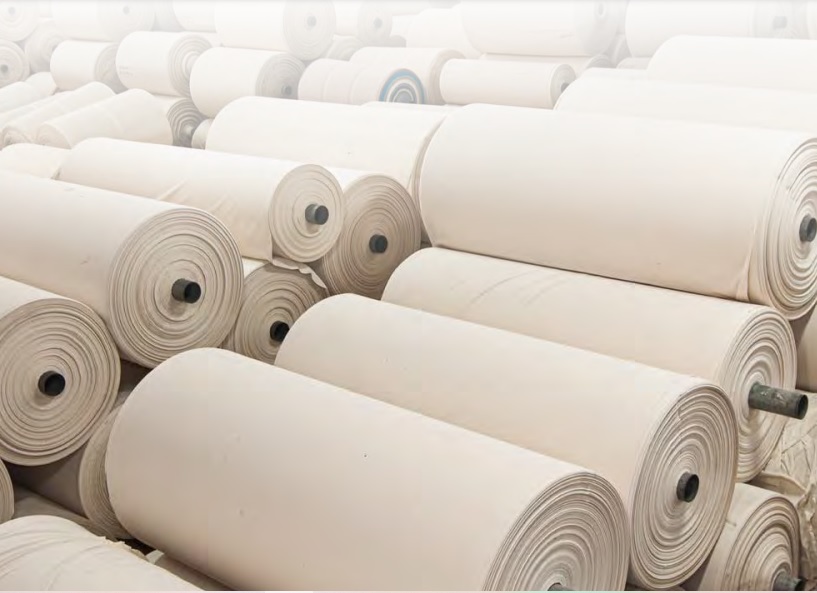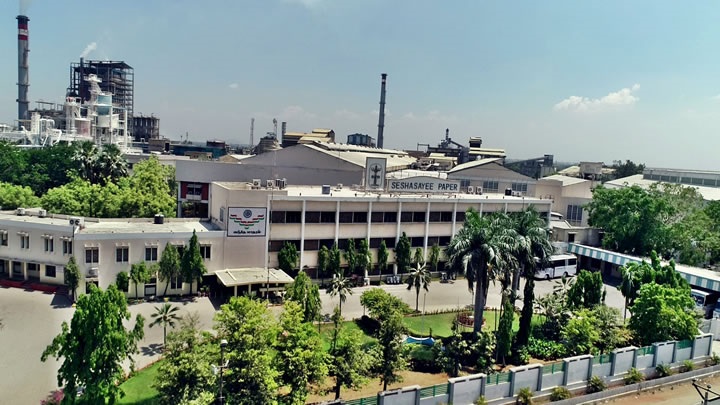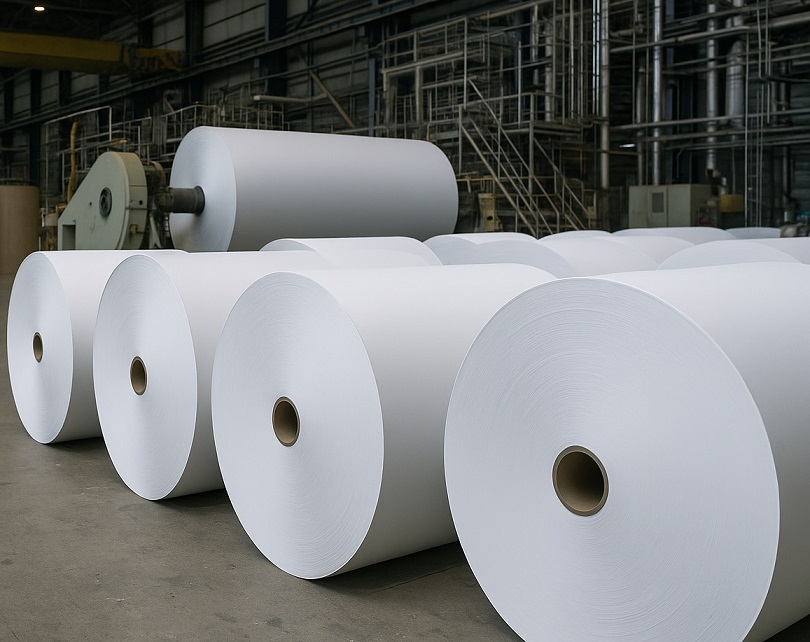Wood prices have stabilized over the last three months; forecasts indicate an impending crisis with prices poised for another uptick, says Mr. Saikat Basu

Wood prices have stabilized over the last three months; forecasts indicate an impending crisis with prices poised for another uptick, says Mr. Saikat Basu
- With pulp prices expected to remain elevated for the next 3-4 months, India is likely to see a decline in imports activity, the import choices of China and Indonesia may shift towards other nations
- Global pulp prices softened, hardwood pulp prices by approx. 26% while softwood prices plummeted by 24% in 2023
- Domestic paper industry poised for activity amidst shifting demand dynamics and price stability, tissue sector shows impressive surge
The following paper market views, demand and price scenarios, and emerging trends are written by Mr. Saikat Basu, Head of Marketing & Sales at Orient Paper & Industries Ltd. The views are personal.
The Pulp and Paper Times:
The global paper industry stands at crossroads, grappling with shifting demand patterns, fluctuating raw material prices, and geopolitical disruptions. In 2023, the industry witnessed significant turbulence as oversupply and weak demand drove down prices. Amidst these challenges, there were pockets of growth, primarily fuelled by the paperboard & Speciality segments and the adaptation to digitalization.
Looking back at 2023, the industry faced a daunting scenario characterized by oversupply and subdued demand. Global pulp prices softened, hardwood pulp prices by approx. 26% while softwood prices plummeted by 24%. The root cause is excessive production amidst economic headwinds, resulting in lower consumption rates.
In India, one of the key growing markets in the paper industry, challenges persisted due to the reliance on Agro-based raw materials, Wastepaper, and Imported softwood pulp, owing to limited availability of Wood pulp resources. Despite these challenges, the industry exhibited resilience in various means. Manufacturers improved their machine capabilities and developed new industrial product range & Plastic substitution products.
Fast forward to 2024, global paper demand is forecasted to experience a moderate uptick, primarily driven by the paperboard segment. This growth momentum is expected to continue into 2025, with an estimated increase of 1-3%. However, in India, the overall growth will hover around 5-6%.
The dynamics of the Domestic paper industry are undergoing a subtle yet significant shift, driven by a confluence of factors that promise both challenges and opportunities in the months ahead. Writing & Printing paper finds itself navigating a landscape where demand growth varies across its different sub-segments. With a steady 3% growth projected for Writing Printing in the domestic market and a better 5% increase in Copier demand, the industry is poised for activity.
However, a forthcoming dip in WPP demand during the May to July, typically associated with notebook and publishing season hiatus until August, presents a challenge. Yet, amidst this downturn, price stability emerges as a beacon, fuelled by the global uptick in Pulp prices and the anticipated release of Government tenders post-elections, which are poised to stimulate demand. As the industry braces for fluctuating tides, adaptation and strategic manoeuvring will be key to weathering the upcoming shifts in the WPP market.
The Tissue sector stands out with an impressive 15% demand surge, indicating promising momentum in this segment. Notably, the HORECA segment's expansion and a reduction in Tissue imports indicate a potentially growing domestic Tissue market in the near term, till new Capital expenditure and Investment decisions in Tissue see the light of the day.
As the industry charts its course through 2024, several key trends emerge. The rise in international wastepaper prices, triggered by disruptions in the Red Sea, reverberates through the global market, impacting domestic prices. In February 2024, international wastepaper prices surged, setting the stage for continued price fluctuations. However, amidst this volatility, domestic prices remained stable, offering a semblance of balance in the market.
Exports, typically a cornerstone of the market's stability, are presently subdued due to the ongoing Red Sea crisis. On the home front, the domestic market hence finds itself contending with the weight of Lesser exports, exacerbating competition among traders. This heightened internal rivalry has led to a noticeable drop in margins for traders. As the industry navigates these turbulent waters, resilience and strategic agility will be paramount for businesses (both manufacturing and trade) aiming to stay afloat amidst the shifting currents.
The intricate dance of supply and demand unfolds across various paper grades. Writing and printing paper prices experienced a decline in February 2024, fuelled by weak demand compared to supply. However the segment showed recovery trends in April. Conversely, Kraft paper prices remained steady but are expected to increase in May, driven by the upward trajectory of wastepaper prices. Packaging board prices witnessed a slight uptick in March-April, buoyed by rising demand, with expectations of stability in May.
The landscape of WPP imports in India is set to undergo a notable shift in the coming months, largely influenced by the persistent high prices of pulp. With pulp prices expected to remain elevated for the next 3-4 months, India, traditionally known for its preference for lower-priced WPP, is likely to see a decline in imports activity. As one of the more price-sensitive markets for WPP, the import choices of China and Indonesia may shift towards other nations offering more competitive rates. This anticipated reduction in imports poses a significant consideration for both domestic producers and international suppliers alike, prompting a reassessment of market strategies and pricing dynamics.
While the domestic paper industry navigates through a landscape defined by fluctuating raw material costs and demand dynamics, the onset of the election season offers a temporary respite. Yet, profitability concerns linger, with operating margins expected to decline amidst falling realizations and subdued demand.
Over the past year, the raw material landscape in India has witnessed a dramatic upheaval, with a severe crisis gripping the availability of essential resources. The proliferation of wood-based small and medium industries, such as veneer mills, MDF board mills, and ply mills, has proliferated across the country, particularly in regions like Chhattisgarh, where a staggering 42 veneer mills have emerged, consuming approximately 2000 metric tons of wood per day from neighbouring catchment areas.
This surge in demand from the Ply & Veneer industry has exerted immense pressure on prices, resulting in a more than 30% increase in wood prices. To mitigate the shortage, major mills have resorted to importing wood chips from countries like Thailand, Vietnam, and Brazil, albeit at a significant cost exceeding Rs 20,000 per ADMT. While wood prices have stabilized somewhat over the last three months, forecasts indicate an impending crisis in the next three months, with prices poised for another uptick. Moreover, the price of bamboo in Assam has also seen a significant rise in the past three months, driven by heightened competition from other mills.
This challenging scenario is expected to persist for the next 3 to 4 years until newly established plantations nationwide begin yielding sufficient wood to alleviate the pressure on the market. As the industry braces for continued turbulence, proactive measures and strategic planning will be imperative for businesses to navigate this period of uncertainty successfully.
As the industry forges ahead, adaptation and innovation remain paramount. Consolidation efforts are underway, with mergers and acquisitions driving competition and facilitating backward integration for raw materials. Amidst the shifting sands of global markets, one thing remains certain—the paper industry's resilience in the face of adversity. Through strategic investments, adaptive measures, and a steadfast commitment to sustainability, the industry charts a path forward, navigating the ever-evolving landscape with resilience and resolve.
About the OPIL:
Established in 1939 with a single paper machine, Orient Paper and Industries Limited has evolved into a multi-product, multi-location company, reflecting the vision of the esteemed C K Birla Group. While CKB group boasts of a diverse portfolio spanning automobiles, engineering products, software development and more, Orient Paper stands out for its commitment to customer aspirations and technological advancement. Renowned for producing high-quality paper sustainably since 1936, it pioneered virgin tissue paper in India and embraces sustainability at its core. Today, it leads the industry by transitioning to renewable energy, shaping a future where integrity, sustainability, and community thrive, fulfilling its mission of building a responsible eco-system.
Web Title: Wood prices have stabilized over the last three months; forecasts indicate an impending crisis with prices poised for another uptick





 Join WhatsApp Group
Join WhatsApp Group Join Telegram Channel
Join Telegram Channel Join YouTube Channel
Join YouTube Channel Join Job Channel (View | Submit Jobs)
Join Job Channel (View | Submit Jobs) Join Buy Sell Channel (Free to Submit)
Join Buy Sell Channel (Free to Submit) Paper News Headlines Channel (Free to read)
Paper News Headlines Channel (Free to read)















